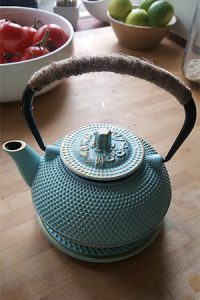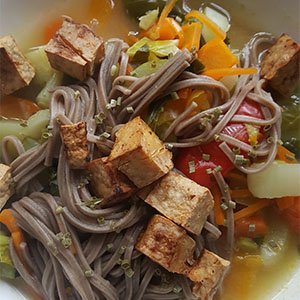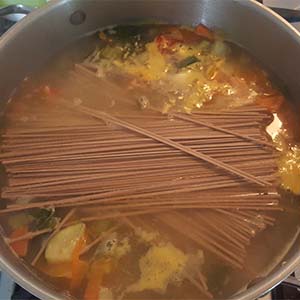Choosing Better, Wearing Longer
Choosing Better, Wearing Longer There is no denying that the fashion industry is producing high plastic
Japan is on my list of countries I want to visit one day soon.
What is it that makes Japanese food and culture so interesting?
Perhaps it’s the Zen factor.
Perhaps it’s my need for order and calmness and beauty that I’m attracted to.
I drink loose tea a lot of times out of cups and pack my suitcase a la Marie Kondo style.
Of course, I’m also aware of the opposite world, with it noise, light & different energy. Video games, manga/anime – I used to watch Takeshi’s castle back in the day. I still haven’t done karaoke. There are clubs in London but the reason is simply out of feeling too conscious (hello social anxiety).
I like the stories or style in films, videos and books – such as The Geisha, Anime, ninjas, Last Samurai, Karate Kid, Kill Bill, Lost in Translation… Who also doesn’t like the look of kimonos even worn by a guy in the New Girl sitcom where the kimono is Schmidt’s preferred leisure wear to relax after work.

My view of Japan might be a bit naive as someone who hasn’t visited but Japanese lifestyle is omnipresent and I’ve found an inspiring non-fictional book.
I want to share a review of Wabi Sabi – Japanese Wisdom for a perfectly imperfect life from Beth Kempton.
Beth Kempton is a japanologist and spent over two decades living and working in Japan. She even previously trained in TV presenter skills at NTV in Tokyo and also hosted her own TV show on Yamagata Cable Television in the north of Japan.
‘Wabi Sabi’ is according to Beth’ book “fundamental to the aesthetic essence and gentle nature of Japanese people. Although its influence is everywhere, it’s not really mentioned. People instinctively know what the concept of Wabi Sabi represents but few can articulate that.”
That sounds like an intriguing concept.
If you want to try and slow down life because it has become so frenetic and hectic and the race seems to go quicker…it’s time for “Wabi Sabi”.
The book has a foreword by Hidetoshi Nakata (an international Japanese footballer) and is divided in 8 chapters how to use this concept in your life plus an afterword how to tie it all together.
The book has a really nice small handy size if you are reading it physically. It comes in a hardcover with a beautiful tranquil Japanese cover design. It has quotes on the side to stand out and a summary of each chapter to encourage you to slow down, connecting with nature, simplifying everything which creates more happiness.
What I like about the wabi sari concept in her book is that it is an intuitive response to beauty that reflects the true nature of life. Steps to build creative confidence and resilience, a theme I’m dealing with in depth on a daily basis.
“Everything is impermanent, imperfect and incomplete.”
Beth Kempton in 'Wabi Sabi'
The beauty in nature doesn’t last but we should appreciate the moment of blossoms, the sunlight, the sea, the algae, sunlight on water…
The book also mentions forest bathing in Japan.
I don’t know about you but when I’m angry with the world, trying to get out into nature and focussing on other living things calms me down.
The Shinrin-yoku or forest bathing concept reached the western shore a couple of years ago. There is even scientific evidence of the positive effects such as blood pressure reductions, improving immune functions as well as helping to improve depression and mental health.
What you basically do is going into the forest to really look and see and feel the energy and beauty of the trees, leaves, plants and animals.
Whilst I’m very lucky to have a forest park close by, I think you can do some nature bathing anywhere in a park with some trees. Connecting with nature is so important especially in inner cities there is hopefully a green spot. Doing yoga among the trees or hiking can gives you a special buzz.

You can spot some parakeet birds and dears as well in Richmond Park, England
When I’m in Japan I definitely want to visit a ceremony in a tea room (Chashitsu).
I read that the tea rooms are typically made of wood and covered with tatami mats where you sit on.
I drink herbal tea every day. Don’t get me wrong, I love the smell of coffee but my body doesn’t agree with it so I’m sticking to coffee chocolate with a cup of tea.
On a more concerning note, after I found out that teabags contain plastic I got more and more into loose tea, especially lemon verbena and peppermint which are my favourite.
In a Japanese tea ceremony, it will probably be green or matcha tea but the zen style of celebrating tea and preparing it with cute tea pots and cups on bamboo or slate fascinates me.
The book also mentions that ‘Wabi Sabi’ can be traced back as far back as far the 15th century. Monk and tea master Murata Shuko had recognised the act of preparing and drinking tea could be a reflection of Zen principles.

How cute is this one? I looked in charity and local shops but couldn’t find any, so got this tea pot with removable strainer from here.
Let’s have a cup of tea and enjoy the moment.
Kintsugi – I first came across this concept when someone posted it on Instagram.
Not only did it look great aesthetically but the notion behind it felt good.
So Kintsugi is the general concept of highlighting or emphasizing imperfections. It visualizes mends and seams as an additive or an area to celebrate or focus on.
It means, literally, ‘to join with gold’.
Embracing damage and not chucking it away, but mending it so it also has real sustainability factor.
Check out Artist Victor Solomon who was inspired by this Japanese technique to repair a dilapidated basketball court in LA.

My first experience with Japanese food was sushi in early 2000.
I first tried norimaki sushi (raw fish, rice, wrapped in seaweed) in Berlin and wasn’t a fan. It had a lot of seaweed to chew and chew and chew… Me and my mum went to a bakery afterwards to get back to flavours we were used to.
It must have been at least more than 5 years later when I tried it again but only filled with veg, typically avocado or tofu or cream cheese. It’s probably far away from the Japanese sushi but I have to admit I don’t eat fish and seafood. I eat vegetarian and with a lot of vegan dishes in between.
You could say I like eating Japanese style food the vegetarian way. I just love those flavours and it makes you feel light.
One of my favourite dishes is Miso Soup with tofu and lots of veg and noodles to fill me and my family up.

Here is a loose recipe. Loose, because I don’t cook with weights. I chuck in intuitively what quantities I need. It also depends on what veg I have in the fridge.
But it’s very easy to make.
Below are my recommendations for the ingredients from Amazon. I get mine from the supermarkets around here, but just so you have an idea.
INGREDIENTS

METHOD
Category: Wellness / Motivation / Travel
Good for: A guide with Japanese wisdom to find true meaning in everyday life
Disclaimer: Please note any direct links are affiliate programs with Amazon which means I get a small commission if you decide to purchase anything or sign up to their services. You won’t pay a penny more but it helps me out!
Choosing Better, Wearing Longer There is no denying that the fashion industry is producing high plastic
What Perfectionism is really doing to you Whenever I read companies brand values on their website
HOW NOT TO KILL YOUR HOUSE PLANTS – Veronica Peerless
To provide the best experiences, we use technologies like cookies to store and/or access device information. Consenting to these technologies will allow us to process data such as browsing behaviour or unique IDs on this site. Not consenting or withdrawing consent, may adversely affect certain features and functions.
You are under 16 years old? Then you cannot consent to optional services. Ask your parents or legal guardians to agree to these services with you.
By accepting all services, you allow YouTube2,D (Functional, Data processing in unsafe third countries), Google reCAPTCHA2,D (Functional, Data processing in unsafe third countries), Google Analytics3 (Statistics), Elementor (Hosting this website), Google Tag Manager (Marketing), Pinterest Tag (Statistics), Pixel Your Site (Statistics) to be loaded.
For more information on the use of your data, please visit our privacy policy.